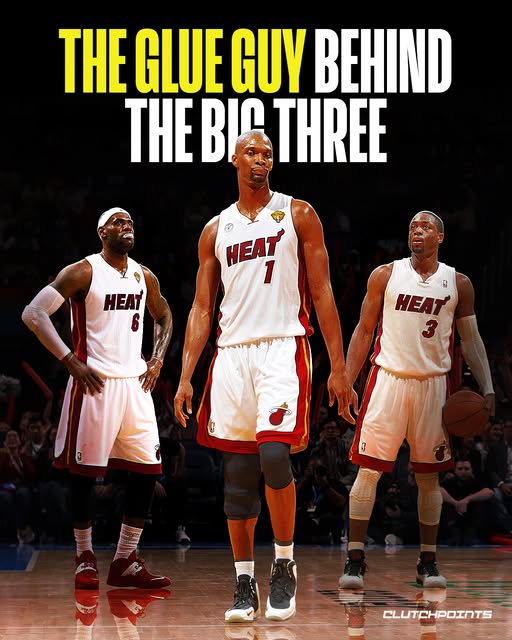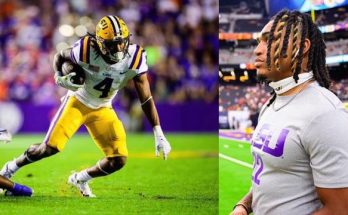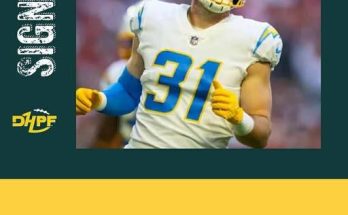When the Miami Heat assembled their legendary “Big Three” in the summer of 2010—LeBron James, Dwyane Wade, and Chris Bosh—it was a seismic shift in the NBA landscape. Headlines blared with excitement about LeBron’s televised “Decision,” Wade’s return to South Beach, and the championship promises that followed. Most of the attention, understandably, focused on LeBron, the most gifted all-around player of his generation, and Wade, the homegrown Finals MVP who had already delivered a championship to Miami in 2006. But lost in the noise was the man who quietly made it all work—Chris Bosh. Often overshadowed and underappreciated, Bosh’s transformation into the ultimate team-first superstar was the essential ingredient that turned potential into reality for the Heatles. Without him, Miami’s dynasty dreams may have never materialized.
Before Miami, Bosh was a franchise cornerstone with the Toronto Raptors. A perennial All-Star, he averaged 20+ points and 10 rebounds a game while carrying a mediocre supporting cast in the unforgiving Eastern Conference. In Toronto, he was the focal point, the guy who touched the ball on every critical possession, and the face of the franchise. When he opted to join Wade and LeBron in Miami, he knowingly gave up that status. That sacrifice alone should have said something about Bosh’s character and willingness to adapt. But what followed over the next four seasons revealed a level of basketball intelligence, selflessness, and versatility that few superstars have ever shown.
The first thing Bosh had to do was reinvent his game. In Toronto, he operated largely from the low post and midrange, using his length and touch to score over defenders. In Miami, the spacing didn’t allow for three stars to all operate near the paint. Bosh extended his range, eventually becoming a lethal pick-and-pop threat and a consistent three-point shooter—especially from the corners and top of the arc. This evolution helped unclog the paint for Wade’s slashes and LeBron’s drives. It also gave the Heat a small-ball advantage that was ahead of its time. Bosh became a stretch five in a league that was still grappling with the concept. His ability to space the floor, hit clutch jumpers, and still defend opposing bigs was the foundation of Miami’s most effective lineups.
Defensively, Bosh was even more critical. Erik Spoelstra’s famous “pace-and-space” system leaned heavily on Bosh’s agility and instincts. As the Heat often played without a traditional center, Bosh became the de facto anchor on defense. He guarded centers, switched onto guards during pick-and-rolls, and helped execute Miami’s hyper-aggressive blitzing schemes. In an era before switching became the norm, Bosh’s ability to hedge, recover, and contest without fouling gave Miami enormous defensive flexibility. While Wade and LeBron provided highlight-reel blocks and steals, Bosh’s quieter presence as a help defender and communicator was equally valuable.
One of the most poignant examples of Bosh’s clutch contributions came during the 2013 NBA Finals against the San Antonio Spurs. In Game 6, with the Heat’s championship hopes hanging by a thread, it was Bosh who grabbed the offensive rebound off LeBron’s missed three-pointer and passed it to Ray Allen in the corner for one of the most iconic shots in NBA history. That single play extended the series and ultimately led to Miami’s second straight title. A few possessions later, Bosh sealed the win by blocking Danny Green’s three-point attempt at the buzzer. He didn’t score 30 points that night, nor was he the primary star, but he was the reason they lived to fight another game.
Bosh’s sacrifices weren’t just tactical—they were psychological. For a player of his stature to go from primary option to tertiary scorer required humility and maturity. The media often portrayed him as the “third wheel,” and he was the butt of memes and internet jokes. His style was never flashy, and he didn’t boast about his role. But those inside the Heat organization and basketball purists knew the truth: Bosh was the glue guy. The Heatles might have had the brightest stars, but it was Bosh who held the constellations in orbit.
Even off the court, Bosh played a vital role in Miami’s chemistry. He was intellectually curious, often the most thoughtful speaker during interviews, and had a knack for bridging the emotional gap between Wade’s fire and LeBron’s intensity. He was the comedic relief in the locker room, the guy who lightened the mood during tense stretches, and the one who embraced the city’s culture with open arms. His love of music, art, and community outreach made him one of the most beloved players in Miami history—not just because of what he did on the court, but how he carried himself away from it.
As the Heat’s four-year run came to an end in 2014, with LeBron returning to Cleveland, the perception of Bosh began to shift. Left behind with Wade to carry the franchise forward, Bosh returned to a more prominent scoring role and showed flashes of his old Toronto self. He was an All-Star again, still productive, and eager to lead a new iteration of the Heat. But fate had other plans. In 2015, blood clots were discovered in Bosh’s lungs, a life-threatening condition that forced him to miss the rest of the season. When the clots returned the following year, the reality of his condition became unavoidable. Despite multiple attempts to return, Bosh was never cleared to play again, and his career came to a premature and heartbreaking end.
That abrupt ending cast a shadow over what was otherwise a Hall of Fame career. For years, debates raged over whether Bosh truly belonged in basketball’s pantheon of greatness. But with time, appreciation grew. Analysts and former players began to speak openly about how vital Bosh had been to the Heat’s success. His defensive versatility, floor-spacing offense, and sacrifice-laden leadership were suddenly recognized as ahead of their time. In 2021, Bosh was finally inducted into the Naismith Memorial Basketball Hall of Fame—a long overdue validation of his place in NBA history.
Bosh’s legacy goes beyond championships and All-Star appearances. He helped redefine what it meant to be a big man in the modern NBA. Players like Anthony Davis, Al Horford, Bam Adebayo, and Jaren Jackson Jr. have followed in his footsteps—big men who can switch, shoot, and think the game at a high level. In many ways, Bosh was a prototype for the direction basketball would go in the next decade.
Moreover, Bosh’s story is a powerful lesson in humility and team dynamics. In an age where personal brands and individual stats often dominate the narrative, Bosh chose to prioritize winning and cohesion. He accepted criticism, reduced shot attempts, and adjusted his identity to elevate the group. He proved that you don’t need to be the alpha to be invaluable. Sometimes, the most important player isn’t the one who leads in points or headlines, but the one who does the little things, who adapts, who sacrifices. That was Bosh.
In retrospect, the Heatles experiment was as much a test of ego management as it was basketball talent. That it worked so well was due in large part to Bosh’s willingness to adapt and his commitment to team success. He didn’t just tolerate his new role—he embraced it, evolved in it, and eventually mastered it. Every great team needs a stabilizer, someone who fills the gaps and makes the stars shine brighter. For the Miami Heat, that stabilizer was Chris Bosh. He was the unsung hero of the Heatles, the quiet force behind the glamor, and the glue that made history stick.



